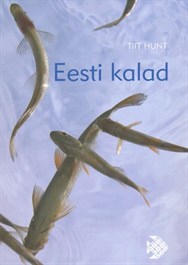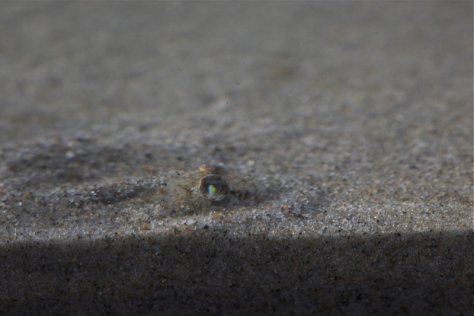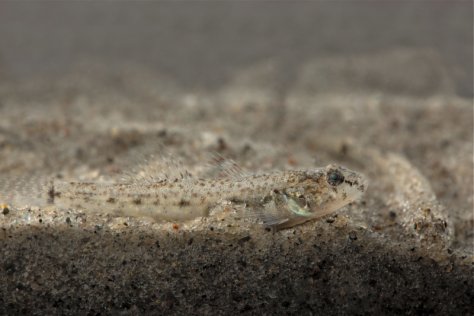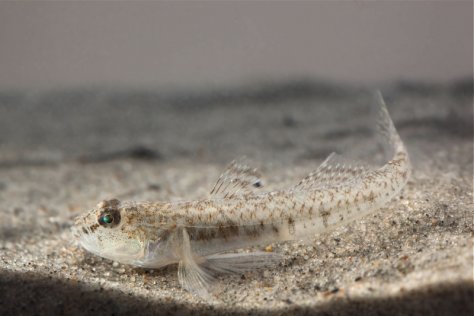New Cameras
Gobies in shore waters
Photographed by Tiit Hunt
Translation: SilverT
You want to hide in the shore sand, but observe the surroundings with your green eyes...
North-eastern coast of Estonia is filled with gobies on the water line and it is quite exciting to observe their doings. They move with thrusts on the seabed like the Baltic prawn – few dozen centimeters of thrust and then they hide – in the sand or between plants which grow in water.
Common goby
Common goby Pisimudil Pomatoschistus microps
Sand goby Väike mudil ehk väike mudilake Pomatoschistus minutus
Common gobies are the smallest fish in Estonia with the body length not exceeding three and a half centimeters and 0,25 grams in weight. Their appearance is perfect for hiding: body has the color of the sand, clusters of brown spots on the back and usually eight blackish-brown spots on the sides. Pelvic fins form a funnel with smooth edges and dorsal fins are close to each other.
Gobies feed on ringed worms, copepods, amphipod crustacea, rotifers... anything that can currently be found in the bottom of the sea. They move to deeper waters for the winter.
Sand goby is slightly bigger than the common goby, only by a centimeter in average, but weighs twice as much. Gobies may grow as long as seven centimeters in the Baltic Sea and both species are prey for larger predatory fish and also birds.
Sand goby
These two fish look quite similar; those who are interested can be recommended a great reference book which is available at the moment – „Eesti kalad“ (Estonian fish), written by Tiit Hunt and published by Varrak.











